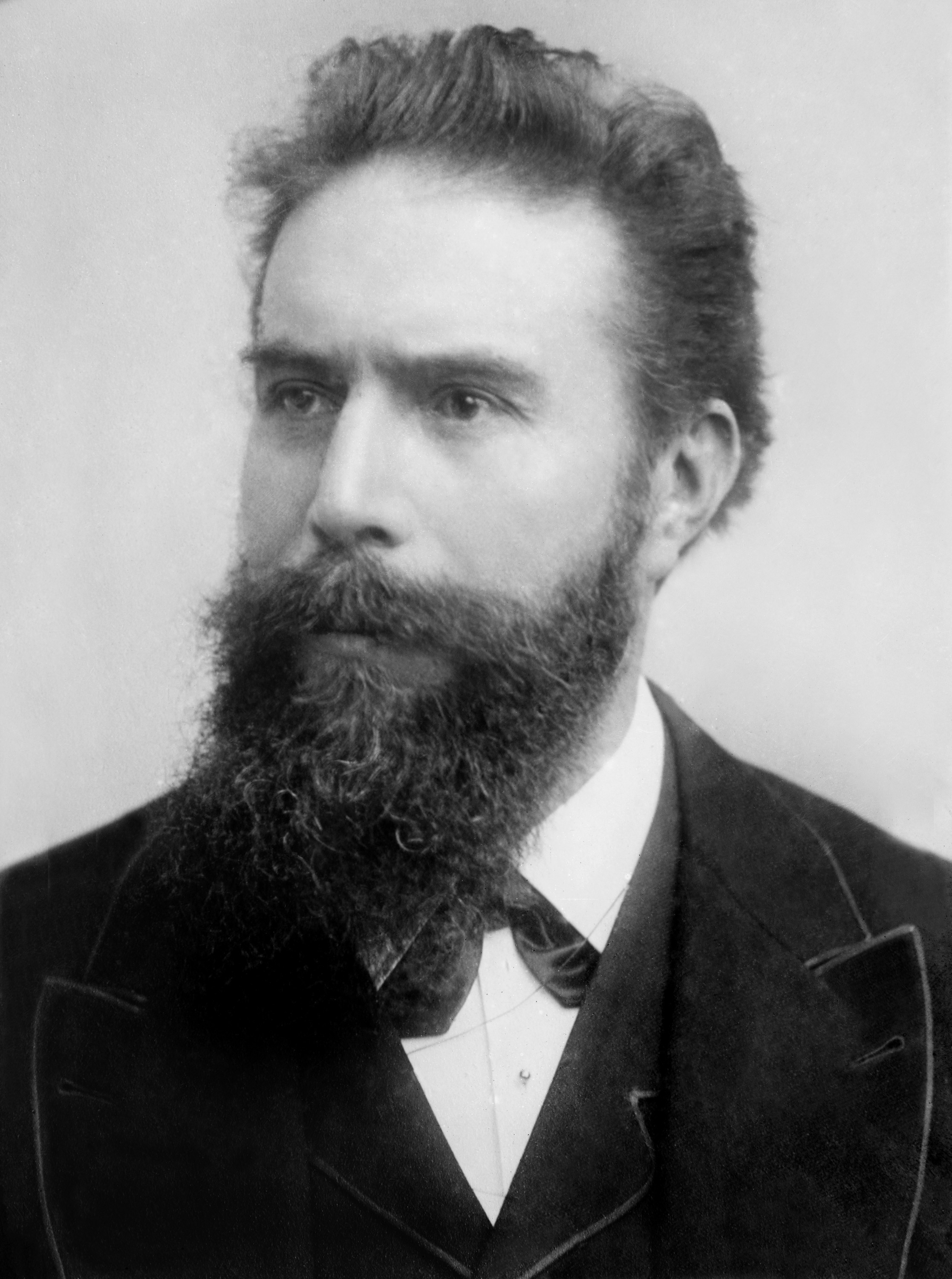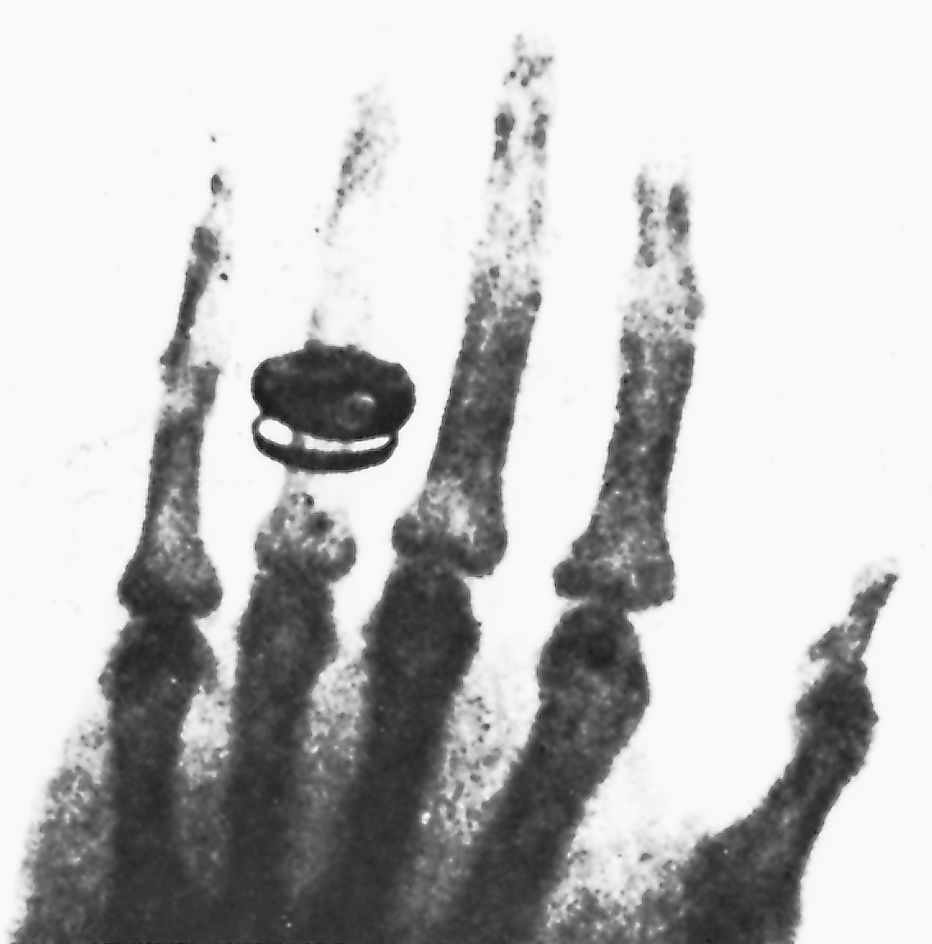Roentgen, << REHNT guhn, >> Wilhelm Conrad (1845-1923), a German physicist, in 1901 won the first Nobel Prize in physics for his discovery of X rays. During an experiment in 1895, Roentgen covered a Crookes tube (an evacuated glass tube through which an electric current was passed) with black paper. He noticed that a dark image appeared on a photographic plate substance near the tube when he turned on the electric current.


Roentgen assumed that unknown, invisible rays, which he called X rays, were coming from the tube. These rays passed easily through some substances, such as flesh, but were largely stopped by others, such as metal or bone. Because of this, Roentgen found he could photograph the bone structure of his wife’s hand with the rays. The use of X rays revolutionized medical and surgical techniques, and eventually provided scientists with new insights into the nature of radiation and the structure of the atom. In Germany, X rays were called Roentgen rays in his honor.
Roentgen was born on March 27, 1845, in Lennep (now Remscheid), Germany. He was a professor at the University of Wurzburg when he made his famous discovery. He died on Feb. 10, 1923.
